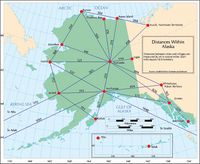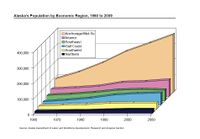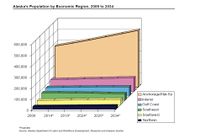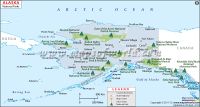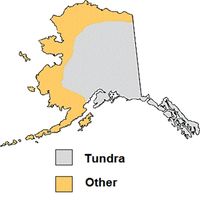Group A - Collaborative Climate Adaption Project
| Place | Barrow | |
| Country | Alaska | |
| Topic | Effects of climate change and adaptation possibilities - case study from Barrow, Alaska | |
| Author(s) | Palmowska Agnieszka, Shrestha Neha, Szilagyi-Nagy Anna | |
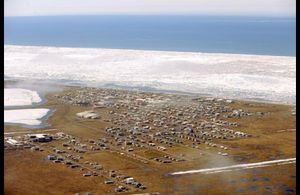
| ||
| Source | http://www.alaskadispatch.com | |
|
| ||
Rationale: Why have you selected this case study area?
- We have selected the area of the city Barrow, which is located in the north of Alaska, because this area is a perfect example to show that climate change is really progressing and causes the changes in many main areas of life. Barrow is known as the "Ground Zero for Climate Change".
- To select this area also encouraged us Dr. Klaus Görgen who talked about problems in Barrow, Alaska, during the first online seminars.
Authors' perspectives
- We are a landscape architects so we are closely associated with the climate, and also we have to constantly adapt to climate change. Showing the problem from the perspective of a place so distant may be helpful in understanding the general problem of climate change and will expand our knowledge about this topic.
- It is important that everyone should be aware that climate change is a global problem and its consequences are visible even in the farthest regions of the world.
Landscape and/or urban context
- Biogeography, land use patterns, cultural features, overall character, history and dynamics
- ratio of green/blue and sealed/built-up areas
Illustration: Map; sketches; short descriptive analyses
Urban contex of city Barrow
The immediate Barrow situated in Alaska, in the largest and nordernmost state in U.S. (1,477,300 km2, it extends, to the Eastern Hemisphere so the westernmost and easternmost as well) which has more ocean coastline than all of the other U.S. states combined (6640 miles). http://www.fas.org/sgp/crs/misc/RS21729.pdf and a capital, Juneau, that is only accessible via ship or air.
Barrow is the most famous city of the Northern Economic Region, because it is northernmost town in the United States. This region is the remote, less crowded part of the state, encompassing 380 native villages and small towns such as Nome, Bethel, Kotzebue, King Salmon, Dillingham, and includes Katmai National Park, Kodiak Island, and Unalaska-Dutch Harbor.
With approximately 4,500 residents, the Barrow area has probably the harshest weather in Alaska. It is one of the world's largest Inupiat Eskimo settlement where traditional culture and modern life are blended. While many modern conveniences are available, the subsistence life style is still very much in evidence, and fishing, hunting, and whaling are a way of life. North Slope oil discovery has brought wealth to the area, including modern influences such as snowmobiles, but it has been continuously occupied for 5,000 years by people who have learned how to live in the harsh arctic climate. The sun shines and never sets for 82 days from early May to early August and it is dark for 51 - 67 days (the sun never rises) between November and January. (http://fairbanks-alaska.com/barrow.htm )
Infrastructure, quality of life
The city itself is hardly accessable just with plane or ship. For researchers, local ground transportation can be provided on a reimburseable basis by BASC and include trucks, four wheelers, snow machines and small to relatively large boats. Local vehicle hire and taxi services are also available. Off road traffic is limited to the period of permanent seasonal snow cover (ca. October-May). http://www.eu-interact.org/field-sites/barrow/
•As the seat of the North Slope Borough, many regional health and social services are located in Barrow. Some of the public facilities include: senior citizen center, city teen center, women's shelter, and family services center. Health care, police station and fire stations.
•Many Barrow homes are heated by natural gas from nearby gas fields, and have modern water and sewer systems. Utilities are available through Barrow Utilities and Electric Cooperative, a local member-owned cooperative, which offers electric power, natural gas, and water and sewer services. The North Slope Borough provides trash and sewer pick-up free of charge.
•Seven churches, an elementary, middle and high school and a post secondary education center, Ilisagvik College, serve the community. On evenings and weekends, the high school's swimming pool, weight room and gym are open to the public. Residents also use Barrow's recreation center, which boasts a gym, racquetball courts, weight room and sauna.
•Communications in Barrow include phone, mail, a public radio station and cable TV station. The community also contains four hotels, many restaurants, a dry cleaner and a bank. Barrow has a large grocery/merchandise store and several convenience stores. The City of Barrow regulates the import of alcoholic beverages, and sale is banned. Major repair services include marine engine, boat, auto and aircraft mechanics. Diesel, propane, marine gas, aviation fuel, unleaded, regular and supreme gas are available for purchase. (http://www.arcticscience.org/aboutBarrow.php)
Population
In Alaska there is a total underserved population of 370,088, representing 59% of the state’s residents. This reflects Alaska’s low population density and extreme rural nature. (acrh-ahec.uaa.alaska.edu) The lowest ratio of the total population live in this area (3.4%) (http://www.labor.state.ak.us/research/pop/present/jan272011.pdf page 2), but it means also the majority of Alaska's native populations (of which approximately 59.3 percent are Inupiat Eskimo.) (http://www.arcticscience.org/aboutBarrow.php), so this is largest Iñupiat town in Alaska (Barrow takes its modern name from Point Barrow, named in 1825 by Captain Beechey of the Royal Navy for Sir John Barrow of the British Admiralty. Beechey was plotting the Arctic coastline of North America at the time. http://www.arcticscience.org/aboutBarrow.php). They traditionally, call the community Ukpeagvik, "place where snowy owls are hunted" and make their living in similar fashion to their ancestors. (Wohlforth, Charles P. (2007). Frommer's Alaska 2008. Frommer's. p. 434. ISBN 0-470-15288-5, ISBN 978-0-470-15288-1.)
Flora and fauna, landscape types
•The landscape consists of polygonized tundra, vegetated drained lake basins, ponds and lakes.
•Vegetation types include aquatic, seasonally flooded, wet, moist, dry and occasionally bare ground. The Coastal Plain flora includes 124 vascular plant species, 177 mosses, and 49 hepatics (Brown 1980).
•Terrestrial fauna include 10 mammal species and 28 bird species.
•Birding in the Arctic: Barrow is one of the top 100 birding spots in America. Although the diversity of birds is somewhat small, the annual visitors are spectacular. All four species of Eider ducks migrate along the coast and nest in the tundra around Barrow. Numerous other ducks and waterfowl also nest in the millions of small puddles and lakes across the tundra. Barrow is also prime habitat for many shorebirds. Perhaps the most spectacular summer visitor and breeder is the snowy owl, from which comes the Inupiat name for Barrow, Ukpeagvik, which translates to "place to hunt snowy owls". Now, of course, the owls are observed and studied. Barrow is the only spot in America one can reliably expect to see the elusive Ross's gull, which shows up, sometimes in great numbers during the last week of September through the first couple of weeks of October. (http://fairbanks-alaska.com/barrow.htm)
•Polar Bears & Whales: According to the local tour operators, the very best time to see polar bears is after the fall whaling season. Although it is possible to see them at the Point anytime of the year, October and November allow for the most likely viewing opportunities. In late May and early October, the Eskimo natives go Bowhead whaling. During whaling season there is an opportunity to photograph a whale being brought in on the beach and butchered. Whaling season tends to encourage the polar bears to feast on the remains that are left at Point Barrow. The bears seldom ever make it into town so you would need a tour to see them. The King Eider Inn, in Barrow, has set up a page with a list of the tours available. (http://fairbanks-alaska.com/barrow.htm)
•The northeast corner of Alaska is covered by the Arctic National Wildlife Refuge, which covers 19,049,236 acres (7,708,952 ha).
Cultural/social/political context
- Brief explanation of culture, political economy, legal framework
Illustration: Bullet points, image, background notes
Local Climate
- What are the climatic conditions at present? Have there been extreme weather events in the near past?
- Which changes are expected? Is there any evidence?
Illustration: Table or time line
Analysis of vulnerability
- If you consider these potential changes - which aspects/functions of your case study would be affected?
Illustration: Map/diagram/sketches/photos/background notes
Proposals for Climate Change Adaption
- How could your case study area become more resilient to climate change?
- Which measures would need to be taken to adapt to the new situation?
- How could you assure sustainability of these measures?
- Please describe 2-3 measures
Proposals for Climate Change Mitigation
- Which measures would need to be taken to reduce greenhouse gas emissions and other drivers of climate change within your case study area?
- How could you assure sustainability of these measures?
- Please describe 2-3 measures
Your scenario
- How will this area look like in 2060?
- Please forecast one potential future development taking climate change into account
Illustration: Map/diagram/sketches photos and background notes
What can be generalized from this case study?
- Are there any important theoretical insights?
- Which research questions does it generate?
- Short statement plus background notes
Image Gallery
- Yourimage.jpg
your image text
- Yourimage.jpg
your image text
- Yourimage.jpg
your image text
- Yourimage.jpg
your image text
- Yourimage.jpg
your image text
- Yourimage.jpg
your image text
- Yourimage.jpg
your image text
- Yourimage.jpg
your image text
References
Source of jpg: http://www.alaskadispatch.com
About categories: You can add more categories with this tag: "", add your categories

